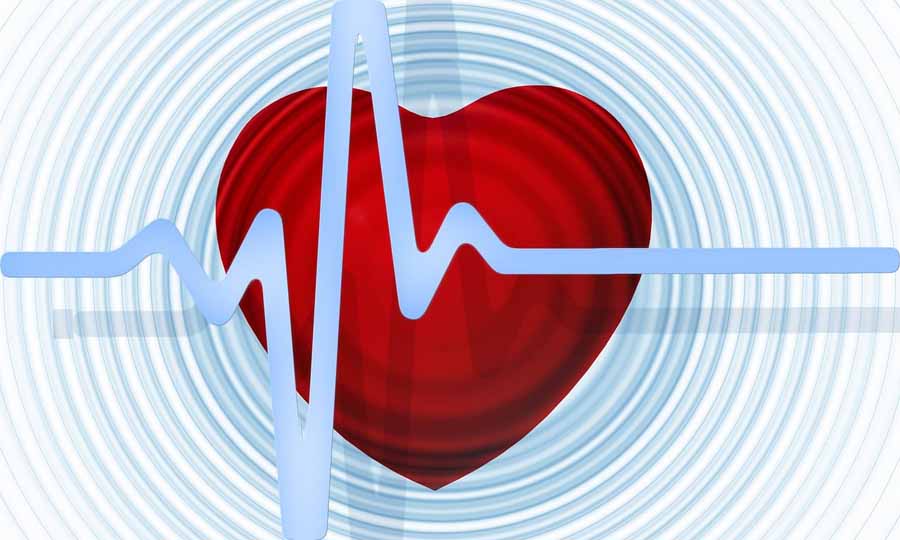Arrhythmia, a term encompassing a range of irregular heartbeats, is a prevalent concern in the medical community. It can manifest as the heart beating too fast (tachycardia), too slow (bradycardia), or with an irregular rhythm. Cardiac arrhythmia is a term used to describe an irregular heartbeat, and it affects between 1.5% and 5% of people in the United States. It has the potential to be a serious and even deadly problem. Understanding whether arrhythmia is a serious heart condition requires a nuanced exploration of its types, causes, symptoms, diagnostic methods, and potential complications. This article delves into these aspects to provide a comprehensive overview of arrhythmia and its implications on heart health.
Types of Arrhythmias
Arrhythmias are classified into various types based on their origin and behavior. The main categories include:
1. Tachycardia
Tachycardia refers to a heart rate that exceeds the normal resting rate. It can be further divided into:
Atrial Tachycardia: Rapid heart rate originating from the atria.
Supraventricular Tachycardia (SVT): Fast heartbeats originating above the ventricles.
Ventricular Tachycardia (VT): Rapid heart rate originating from the ventricles, often more serious due to its potential to lead to ventricular fibrillation, a life-threatening condition.
SEE ALSO: What Should You Not Do With an Irregular Heartbeat
2. Bradycardia
Bradycardia is characterized by a slower than normal heart rate. While some athletes naturally have lower heart rates, pathological bradycardia can indicate issues with the heart’s electrical system.
3. Atrial Fibrillation (AFib)
AFib is the most common type of serious arrhythmia, where the atria beat irregularly and out of coordination with the ventricles. This can lead to poor blood flow and increase the risk of stroke and heart failure.
4. Atrial Flutter
Atrial flutter is similar to AFib but involves more organized, rapid contractions of the atria. It can also lead to significant health complications if untreated.
5. Premature Contractions
These are early heartbeats that originate from the atria (premature atrial contractions) or ventricles (premature ventricular contractions). While often benign, frequent premature contractions can lead to more serious arrhythmias.
6. Ventricular Fibrillation (VFib)
VFib is a severe form of arrhythmia where the ventricles quiver ineffectively instead of pumping blood. It is a medical emergency that requires immediate intervention.
Causes of Arrhythmias
Arrhythmias can arise from various factors, including:
1. Structural Heart Changes
Conditions such as cardiomyopathy, heart valve disease, and congenital heart defects can disrupt the heart’s normal electrical pathways.
2. Coronary Artery Disease (CAD)
CAD, characterized by reduced blood flow to the heart muscle due to blocked arteries, can lead to ischemia and subsequent arrhythmias.
3. Electrolyte Imbalances
Electrolytes such as potassium, calcium, and magnesium play crucial roles in heart function. Imbalances can disrupt the electrical impulses and lead to arrhythmias.
4. Lifestyle Factors
Excessive alcohol consumption, caffeine intake, smoking, and illicit drug use can precipitate arrhythmias.
5. Medication Side Effects
Certain medications, including some prescribed for heart conditions, can have arrhythmogenic effects.
6. Other Medical Conditions
Thyroid disorders, hypertension, diabetes, and sleep apnea are among the conditions that can contribute to the development of arrhythmias.
Symptoms of Arrhythmias
The symptoms of arrhythmias vary widely, from benign to life-threatening, and can include:
Palpitations: Sensation of a racing, pounding, or fluttering heart.
Dizziness or Lightheadedness: Due to reduced blood flow to the brain.
Shortness of Breath: Resulting from inefficient heart pumping.
Chest Pain: Indicative of reduced blood flow to the heart muscle.
Syncope: Sudden fainting or near-fainting episodes.
Fatigue: Chronic tiredness due to poor blood circulation.
Diagnosing Arrhythmias
Accurate diagnosis is crucial for determining the seriousness of an arrhythmia. Common diagnostic tools include:
1. Electrocardiogram (ECG or EKG)
An ECG records the electrical activity of the heart and can identify irregularities in rhythm.
2. Holter Monitor
A portable device worn for 24-48 hours to continuously record the heart’s electrical activity.
3. Event Monitor
Similar to a Holter monitor but used for longer periods, often weeks, to capture intermittent arrhythmias.
4. Echocardiogram
An ultrasound of the heart to evaluate its structure and function.
5. Electrophysiological Study (EPS)
An invasive procedure that maps the heart’s electrical activity to identify the source of arrhythmias.
6. Stress Test
Evaluates the heart’s response to physical exertion, which can reveal exercise-induced arrhythmias.
Complications of Arrhythmias
The severity of an arrhythmia is often gauged by its potential complications, which can be serious and include:
1. Stroke
Particularly associated with AFib, where irregular heartbeats can lead to blood clot formation and subsequent stroke if the clot travels to the brain.
2. Heart Failure
Chronic arrhythmias can weaken the heart, reducing its ability to pump blood effectively, leading to heart failure.
3. Cardiac Arrest
Severe arrhythmias like VFib can cause the heart to stop beating, requiring immediate emergency intervention.
4. Sudden Cardiac Death
A potential outcome of untreated severe arrhythmias, especially VT and VFib.
Treatment of Arrhythmias
Treatment strategies for arrhythmias aim to restore normal heart rhythm, control heart rate, and prevent complications.
They include:
1. Lifestyle Modifications
Reducing risk factors such as alcohol, caffeine, and smoking can help manage arrhythmias.
2. Medications
Antiarrhythmics: To restore normal heart rhythm.
Beta-Blockers: To control heart rate.
Anticoagulants: To reduce stroke risk in AFib patients.
3. Medical Procedures
Cardioversion: Electrical shock to restore normal rhythm.
Catheter Ablation: Destruction of the tissue causing arrhythmia.
Pacemaker: Device to regulate heart rate.
Implantable Cardioverter-Defibrillator (ICD): Device to detect and treat life-threatening arrhythmias.
4. Surgery
In severe cases, surgical interventions such as maze procedure or heart transplant may be necessary.
Conclusion
Is Arrhythmia a Serious Heart Condition?
In conclusion, whether arrhythmia is a serious heart condition depends on its type, underlying cause, and associated complications. While some arrhythmias are benign and may not require treatment, others can lead to significant health issues, including stroke, heart failure, and sudden cardiac death. Proper diagnosis and management are essential to mitigate these risks and improve patient outcomes. Therefore, arrhythmias should always be taken seriously, with appropriate medical evaluation and intervention to ensure optimal heart health.

